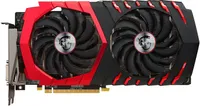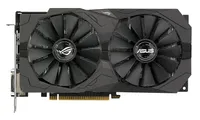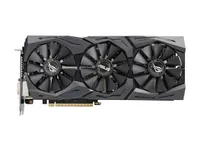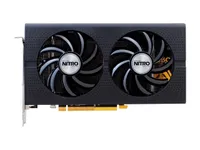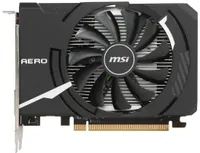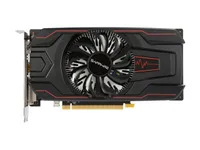Which GPU Is Best for Mining Ethereum? AMD and Nvidia Cards, Tested
These Are The Cards To Buy Today
At present, mining Ethereum remains attractive on GeForces and Radeons. But the right card choice depends on whether you're looking for maximum hash rates or optimized efficiency, and therefore profitability.
Of the mainstream graphics cards we tested, AMD's Radeon RX 480 and 580 remain the fastest once they are overclocked and dialed in with optimized timings.
That said, try to choose a model that comes with GDDR5 memory operating at 2000 MHz or more. And don't forget to use AMD's ReLive Edition Beta for Blockchain Compute drivers. They facilitate higher performance and solve the problem caused by more recent DAG Epochs.
On the other hand, don't mess with Radeon R9 390 cards. Even though they're relatively fast at stock settings, our results show that high power consumption wrecks efficiency.
The opposite is true of Nvidia's GeForce GTX 1060 6GB, the best choice if you are searching for peak efficiency. Take care, however, to select a model that allows you to dial back the GPU's frequency and voltage to a sufficiently low threshold. It's a real bummer that Nvidia doesn't allow the modification of its BIOSes. This would have allowed us to optimize our samples even more, further improving their efficiency.
Sapphire's RX 470 Mining board deserves a special mention. It's loaded with a mining-optimized BIOS and equipped with high-quality GDDR5. No additional modifications are necessary for this card to demonstrate its best (and most efficient) performance.
Finally, the Radeon RX 560 hits us with love at first sight. Behind their fragile appearance, these graphics cards are diabolically effective, managing to rival Nvidia's GeForce GTX 1060 once you get them set up with mining-oriented BIOS modifications.
Get Tom's Hardware's best news and in-depth reviews, straight to your inbox.
MORE: The Ethereum Effect: Graphics Card Price Watch
MORE: How To Mine Ethereum Now
MORE: Experiment: Build a (Profitable) Ethereum Mining Rig From Spare Parts
MORE: Top 25 Cryptocurrencies By Market Cap
MORE: Best Graphics Cards
Current page: These Are The Cards To Buy Today
Prev Page What Does The Future Hold?-
abryant Archived comments are found here: http://www.tomshardware.com/forum/id-3520934/ethereum-mining-performance-geforce-radeon.htmlReply -
Integr8d I like hot Toms laments the prices of GPUs, due to the mining craze, and then publishes articles like this...Reply -
derekullo Reply
If you know the enemy and know yourself, you need not fear the result of a hundred battles.20677340 said:I like hot Toms laments the prices of GPUs, due to the mining craze, and then publishes articles like this...
If you know yourself but not the enemy, for every victory gained you will also suffer a defeat.
If you know neither the enemy nor yourself, you will succumb in every battle.
-
WyomingKnott Add some workstation cards to the review. If they turn out to be hashmasters, it would relieve the strain on the graphics card market.Reply
fat chance. -
derekullo Reply20677421 said:Add some workstation cards to the review. If they turn out to be hashmasters, it would relieve the strain on the graphics card market.
fat chance.
A titan V would have handily crushed any of the cards here with its 70+ MH/s Eth rate.
https://hothardware.com/reviews/nvidia-titan-v-volta-gv100-gpu-review?page=5
But when it comes to making your money back you use:
Cost of graphics card / Megahashes per second (Easy to understand formula, real formula at the bottom)
For the Geforce 1060 that comes out to roughly
$400 / 25MH/s or 16 dollars per megahash (I was able to buy 4 1060s for about $300 each a few months ago. Score!!!)
For the Geforce Titan V that comes out to roughly
$5000 / 82MH/s or 61 dollars per megahash.
As you can see it would take at least 3.8 times as long for a Titan V to pay itself off, not including the power cost.
This isn't the most true comparison due to not taking power into account, but still gives an easily understandable way of seeing why a $5000 GPU isn't worth mining with.
You could have simply bought 3 Geforce 1060s and had a similar hash rate for cheaper.
The goal here being to make back the price of the graphics cards, then everything else is gravy.
Ideally I would have used the formula of
Cost of graphics card / Spreadsheet calculated monthly income taking power and other fluctuations into account.
to calculate on average how long a graphics card would take to pay itself off.
You can also use the calculator on https://whattomine.com/ to quickly calculate the "Spreadsheet calculated monthly income" -
aquielisunari Sun TzuReply
If you know the enemy and know yourself, you need not fear the result of a hundred battles.
If you know yourself but not the enemy, for every victory gained you will also suffer a defeat.
If you know neither the enemy nor yourself, you will succumb in every battle.
-
aquielisunari Bad job Tom's. Just add fuel to the GFX card debacle. Irresponsible and just wrong. First the user must go out and OVERSPEND on a GFX card and then follow this article and start mining and increase the shortages even further. Hm, good job Tom, good job.Reply -
derekullo Reply20677582 said:Bad job Tom's. Just add fuel to the GFX card debacle. Irresponsible and just wrong. First the user must go out and OVERSPEND on a GFX card and then follow this article and start mining and increase the shortages even further. Hm, good job Tom, good job.
Tom's gave you all the information needed for you to decide whether to mine or not.
Let me paint it a bit simpler.
Lets assume you believe the price of Ethereum is going to stay at what it is today, currently $709, forever.
Plugging in all that information into whattomine.com gives us:
https://whattomine.com/coins/151-eth-ethash?utf8=%E2%9C%93&hr=22.5&p=90.0&fee=1.0&cost=0.06&hcost=400&commit=Calculate
(0.06$/kWh is my power cost in my area)
Or $38.78 monthly profit or a 309 day repayment.
If you are confident that Ethereum's price will stay the same or maybe even rise then you could expect to recoup your $400 purchase in at max 309 days.
If 309 days is too long to wait or you are unsure about cryptocurrencies then stay out of the water.
-
WyomingKnott @aquielisunariReply
I don't think that Tom's is going to advance mining much; our longtime enthusiast members mostly won't get into it and it's widely enough known already. A little extra knowledge for those of us on the sidelines and, who knows, maybe miners will concentrate on the most efficient cards and the price of the rest will go down. Not an issue for me, I'm running a fanless GT430, so what do I care about current prices?
